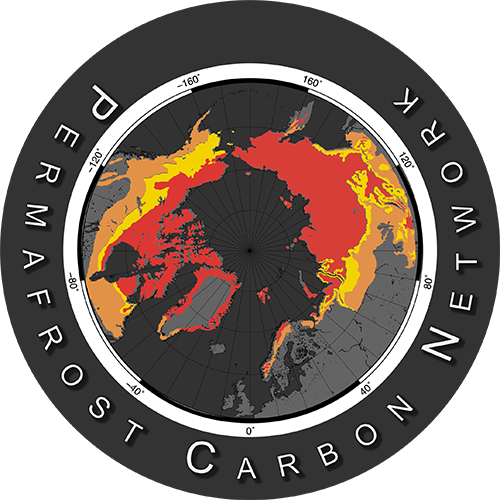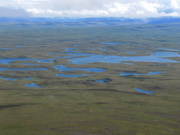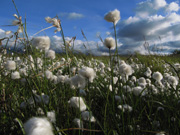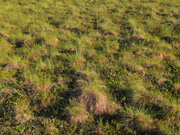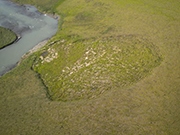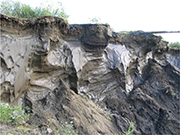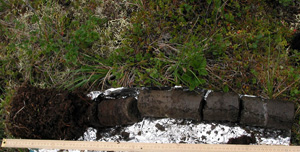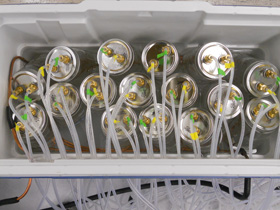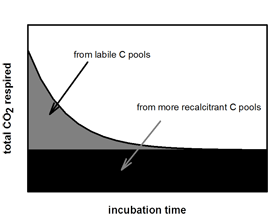Working Group on Quality of Permafrost Carbon
Background and Objectives:
Besides the amount of carbon stored in permafrost soils the carbon quality and therefore decomposability is the most important factor in determining the transfer rate of permafrost carbon to the atmosphere. Soil organic matter quality varies with depth and geographical region and is influenced by past decomposition that often left poor carbon quality. Furthermore, physical protection of soil minerals and environmental factors such as temperature, water, nutrient availability and soil pH can all influence microbial decomposition rates.
Laboratory soil incubation studies are very useful in isolating environmental factors from each other and also allow for environmental manipulations to soils as well as comparisons between soil types and geographical regions. Synthesizing laboratory incubation studies will help determine the parameters that define carbon decomposition and show if there is systematic variation in soil quality across the permafrost zone. As the overall decomposability of permafrost carbon is still poorly understood a synthesis study on incubation studies from permafrost soils will help determine the potential carbon source or sink capacity of permafrost soils and with it possible positive feedbacks between the terrestrial C-cycle and the atmosphere.
Key questions we are adressing in the Carbon Quality working group are:
Completed synthesis products:
Circumpolar assessment of permafrost C quality and its vulnerability over time using long-term incubation data
We assessed the vulnerability of permafrost carbon to decomposition by estimating carbon pool sizes and turnover times from thawed permafrost using long-term incubation data. The vulnerability of carbon ranges from 40% loss in organic soils to 16% in shallow mineral soils and 9% in deep mineral soils over 50 years of incubation at a given temperature of 5°C. Our results show that across the permafrost zone organic and mineral soils with a high carbon to nitrogen ratio are the most vulnerable soils to carbon loss in the near future.
Schädel C, Schuur EAG, Bracho R et al.(2014) Circumpolar assessment of permafrost C quality and its vulnerability over time using long-term incubation data. Global Change Biology, 20, 641-652. https://doi.org/10.1111/gcb.12417
A pan-Arctic synthesis of CH4 and CO2 production from anoxic soil incubations
A next product of the carbon quality working group synthesizes existing CH4 and CO2 production measurements from anaerobic incubations of boreal and tundra soils from the geogrpahic permaforst region to evaluate large-scale controls of anaerobic CO2 and CH4 production and compares the relative importance of landscape-level factors. The results demonstrate that as climate warms in arctic and boreal regions, rates of anaerobic CO2 and CH4 production will increase, not only as a result of increased temparature, but also from shifts in vegetation and increase in ground saturation that will accompany permafrost thaw.
Treat C, Natali SM, Ernakovich J, Iversen CM, Lupascu M, McGuire AD, Norby RJ, Roy Chowdhury T, Richter A, Šantrůčková H, Schädel C, Schuur EAG, Sloan VL, Turetsky MR, Waldrop MP (2015) A pan-Arctic synthesis of CH4 and CO2 production from anoxic soil incubations. Global Change Biology. doi:10.1111/gcb.12875
Potential carbon emissions dominated by carbon dioxide from thawed permafrost soils
A third synthesis using incubation data with permafrost soils was published in Nature Cimate Change in June 2016. In this study, carbon release from 25 Arctic incubation studies were analyzed in two separate meta-analyses to learn more about the conditions promoting either carbon dioxide or methane release. A press release by Northern Arizona University was published online and can be downloaded here
Schädel C, Bader MKF, Schuur EAG, Biasi C, Bracho R, Čapek P, De Baets S, Diáková K, Ernakovich J, Estop-Aragones C, Graham DE, Hartley IP, Iversen CM, Kane E, Knoblauch C, Lupascu M, Martikainen PJ, Natali SM, Norby RJ, O/'Donnell JA, Chowdhury TR, Šantrůčková H, Shaver G, Sloan VL, Treat CC, Turetsky MR, Waldrop MP, Wickland KP (2016) Potential carbon emissions dominated by carbon dioxide from thawed permafrost soils. Nature Clim. Change, https://doi.org/10.1038/nclimate3054
back to top
